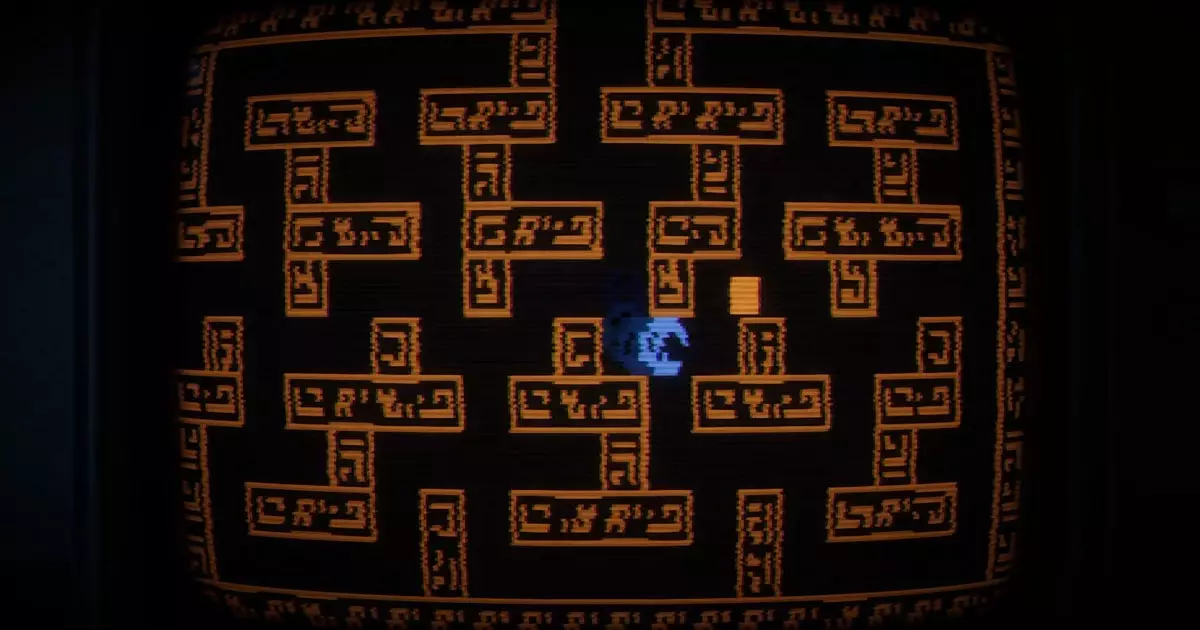In the labyrinth of modern gaming, new releases often glide past unnoticed, overshadowed by blockbusters and the glittering spectacle of high-profile titles. Among these hidden gems is “Tormenture,” a horror game that combines the nostalgic essence of 1980s gaming with a distinctly unnerving atmosphere. After being reminded of its release by keen-eyed community members, it deserves a closer examination, particularly given its intriguing premise and the methods it employs to scare and puzzle players alike.
“Tormenture” aligns itself with a niche genre that capitalizes on the unsettling aesthetics of retro video gaming, reminiscent of works like “Inscryption” and “Pony Island.” Its narrative centers around a child absorbed in an 8-bit game reputed to be haunted. This layer of psychological horror is crafted expertly through the game’s structure, which alternates between the seemingly innocuous realm of childhood—filled with toys and familiar objects—and the disconcertingly sinister game world. This duality taps into a well of nostalgia while simultaneously fraying the boundaries of comfort. The experience becomes unsettling when familiar items from childhood morph into symbols of dread; one cannot help but recall shaking the wheels of a toy phone, reimagined here as an emblem of fear.
Initial impressions of “Tormenture” suggest a game that is impressive in its ambition but possibly compromised in execution—particularly on lower-end hardware. A frustrating technical limitation, such as a frame rate stagnating at an unplayable 10fps, could hinder the player’s ability to engage fully with its intricacies. The striking combination of 8-bit visuals with a more sophisticated 3D environment is commendable, but it raises questions about optimization. For players relying on outdated systems, the game becomes a paradox; its innovative gameplay is potentially stifled by hardware restrictions, creating an unsettling disconnect between vision and viability.
Despite such challenges, the demo provides a tantalizing glimpse into a world where horror grows subtly, unfolding through challenging puzzles and a rich atmosphere. The promise of labyrinthine levels, spectral threats, and meticulous attention to detail in design suggests “Tormenture” is not merely a throwback to earlier gaming forms but a semi-strategic foray into horror mechanics that demand player engagement.
The gameplay ingeniously weaves together puzzles that anchor the mechanics while introducing tension. One memorable encounter tasks players with coaxing a zombie hand to perform actions—a device that is clever in its simplicity. This combination of layers ensures players experience varying degrees of dread as they navigate through cleverly crafted obstacles.
By contrast, the 3D segments promise to deliver modern horror experiences reminiscent of contemporary titles, where the atmosphere can be palpably thick with tension. As players explore the depths of “Tormenture,” they are likely to encounter a growing sense of danger, accentuated by cleverly placed items that shift from nostalgic to sinister over time.
One of the resonant themes in “Tormenture” harkens back to the 1980s era, an interesting choice that serves both as a homage and a criticism of the past. Today’s video game landscapes tend to be lit up with vibrant colors and dynamic graphics, whereas the monochromatic and dimly lit aesthetic of earlier gaming holds a particular place in our collective memory. The contrast between these eras invokes a sense of longing for the simplicity of early gaming while also casting a critical eye on the sensory overload present in modern titles.
Using darkness as a canvas—the very absence of light—”Tormenture” channels the universal fear of the unknown. As players venture through the darkness, their anxieties are brought to life illuminated only by flickering screens, evoking feelings that resonate during the Halloween season.
“Tormenture” embraces its dual identity as a love letter to retro gaming and as a contemporary horror experience. While it may suffer minor setbacks pertaining to technical performance and potential risks of nostalgic comfort, its intriguing premise and puzzle-oriented gameplay suggest a bright future in the horror genre. For those willing to navigate both the charming and chilling landscapes of childhood’s end, “Tormenture” may just be the haunted journey worth taking. The demo is available on Steam for those intrepid players ready to face their fears, inspired by the ghosts of gaming past.


Leave a Reply